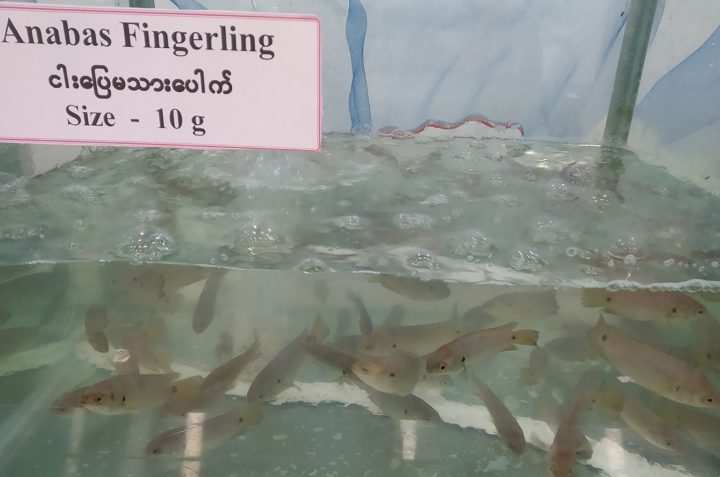17 Sep
Myanmar fisheries sector is hit hard by the coronavirus fallouts, and the Ministry of Commerce is endeavouring to penetrate the US’s fish and seafood market, Yangon Region Fisheries Department stated. The offshore fishing season commenced on 1 September, and fish and shrimp supply has entered Yangon starting from 7 September. Myanmar fishery products exports to the countries in Asia have been severely affected by the global coronavirus outbreak. To effectively mitigate the impacts of the pandemic, the ministry is exerting the concerted efforts to enter the US fish market.
“The coronavirus consequences hurt the stability in Asia fish market. The Commerce Ministry is trying to connect with their counterparts. To export the fishery products to the foreign market, we monitor that the offshore fishing vessels have to use nets with turtle excluder devices to protect endangered sea turtles. Imported seafood from the neighbouring countries are displayed at city marts, and local people are consuming them. That is why we like to encourage seafood fish processing plants to widely distribute in domestic markets, rather than depending on unstable markets. It will also stop cash flow out of the country. It will benefit local consumers as well as entrepreneurs. Furthermore, I like the processing plants to improve production quality,” said Dr Yin Yin Moe, head of Yangon Region Fisheries Department.
Myanmar’s economy is more dependent on the agricultural sector to a large extent. Also, the fisheries sector contributes a lot to the national gross domestic product (GDP). Its fishery production, including shrimps and saltwater and freshwater fish, is far better than the regional countries. If the State can boost processing technology, it will contribute to the country’s economy and earn more income for those stakeholders in the supply chain.
When the offshore fishing season ends, the business people can supply freshwater fish to the city mart holdings, and it will help curb the inflow of fish and seafood from the foreign markets. Myanmar’s fishery products have been placed on over 40 countries in Asia. Myanmar, which has a long coastline, had better keep up with the regional governments to explore more foreign markets.
Additionally, the wild-caught fish are sent to the UK, Italy, France, Cyprus, the Netherlands, Sweden, Greece, Belgium, and Germany markets.
Earlier, only fish caught in the wild were permitted to be exported to the EU market. As exports of Myanmar farmed fish to the European Union have now been allowed, breeders are undertaking necessary measures to ensure Myanmar fishery products meet the rules and regulations of the EU market, according to the Myanmar Fisheries Federation (MFF).
The European market requires suppliers to obtain Hazard Analysis and Critical Control Points (HACCP) and Good Aquaculture Practices (GAqP) certificates to ensure food safety. The fishery products must be sourced only from hatcheries that are compliant with GAqP to meet EU import standards. The MFF is working with fish farmers, processors, and the Fisheries Department under the Ministry of Agriculture, Livestock, and Irrigation to develop the GAqP system. Processors can screen fishery products for food safety at ISO-accredited laboratories under the Fisheries Department. There are 480,000 acres of fish and prawn breeding farms across the country and more than 120 cold-storage facilities in Myanmar.
Export earnings from the fisheries sector during the period between 1 October and 4 September in the 2019-2020 financial year reached US$797.88 million, an increase of $119.9 million from the year-ago period, according to the statistics released by the Commerce Ministry.
Myanmar exported 340,000 tonnes of fishery products worth $530 million in the 2013-2014FY, 330,000 tonnes worth $480 million in the 2014-2015FY, 360,000 tonnes worth $500 million in the 2015-2016FY, 430,000 tonnes worth $600 million in the 2016-2017FY, 560,000 tonnes worth $700 million in the 2017-2018FY, and over 580,000 tonnes worth $728.257 million in the 2018-2019FY, according to the Commerce Ministry.
Than Htike, Htet Myat (Translated by Ei Myat Mon)



